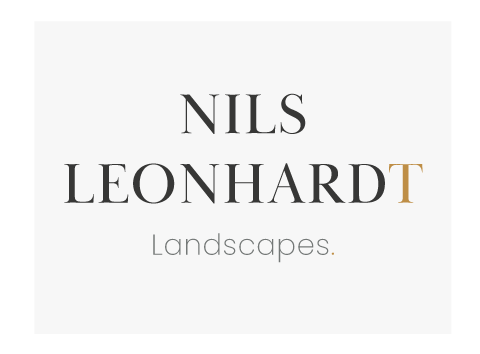“The grass is always greener on the other side of the fence.”
— Folk Wisdom
Nature has the last call when the beauty of a landscape unravels. A photographer can thus only develop pure patience after understanding this fact. The outdoors have been calling my soul since I can recall. And in view of these odd Corona days, I came to realise how gifted I was. Taking travelling for granted is rather easy in Europe. However, and thanks to quarantine, I was forced to see my local area with different eyes. This brief body of work expresses my introspection into my close surroundings.
Landscape photography has always been about getting as far as I can from home and scouting for the perfect view. Landscapes exceed the decisive moment, and are the result of a close and pristine relationship with nature. Nonetheless, it is remarkably hard and challenging to shoot the local habitat. This is because the deep connection with our ordinary surroundings bias our gaze so deeply that it becomes nearly impossible to find anything of interest around us. After noticing this, I was reassured that travelling and photography are a match made in heaven. This is because it is a hack – any foreign place or culture provides the opportunity of being easily surprised.
A wise friend once told me that everything had already been photographed. Therefore, I should stop worrying. “Try shooting everything that has already been captured in your own way, and you’ll find that everything is new for your camera and your eyes” he said. To reinterpret the world was his command, and so I followed his advice. Nature was generous to me, and I’m sure that these ordinary places had never been photographed in such a way. The colour palette vibrantly gets along with itself, everything in this venue screams for serenity and compositional balance – the countryside shaped by light of the magic hour.
I used a telephoto lens with these landscape images on principle. And this is often a preferred decision in contrast to wide angle options. Here, the four panoramas share something with each other. They all provide instant access, and human presence gets lost in the field. There are no distracting natural elements in the foreground. There is just less emphasis on interrupting features, making the complete image the main subject of the storytelling act. The landscape evolves and is free from obstacles. It flows in front of the viewer. It is an open invitation what the condensed visual impact has to offer. And this is my tribute to the Utopian human life we all shall pursue.
- Camera: Fujifilm GFX 50R
- Lens: Fujinon GF100-200mm F5.6 R LM OIS WR
- LEE Filters, Gitzo GK100T
- Blog: Nature Photography Ore Mountains
Erzgebirge, Germany, April 2020.
This folio has been published at On Landscape in November 2020, issue 219.
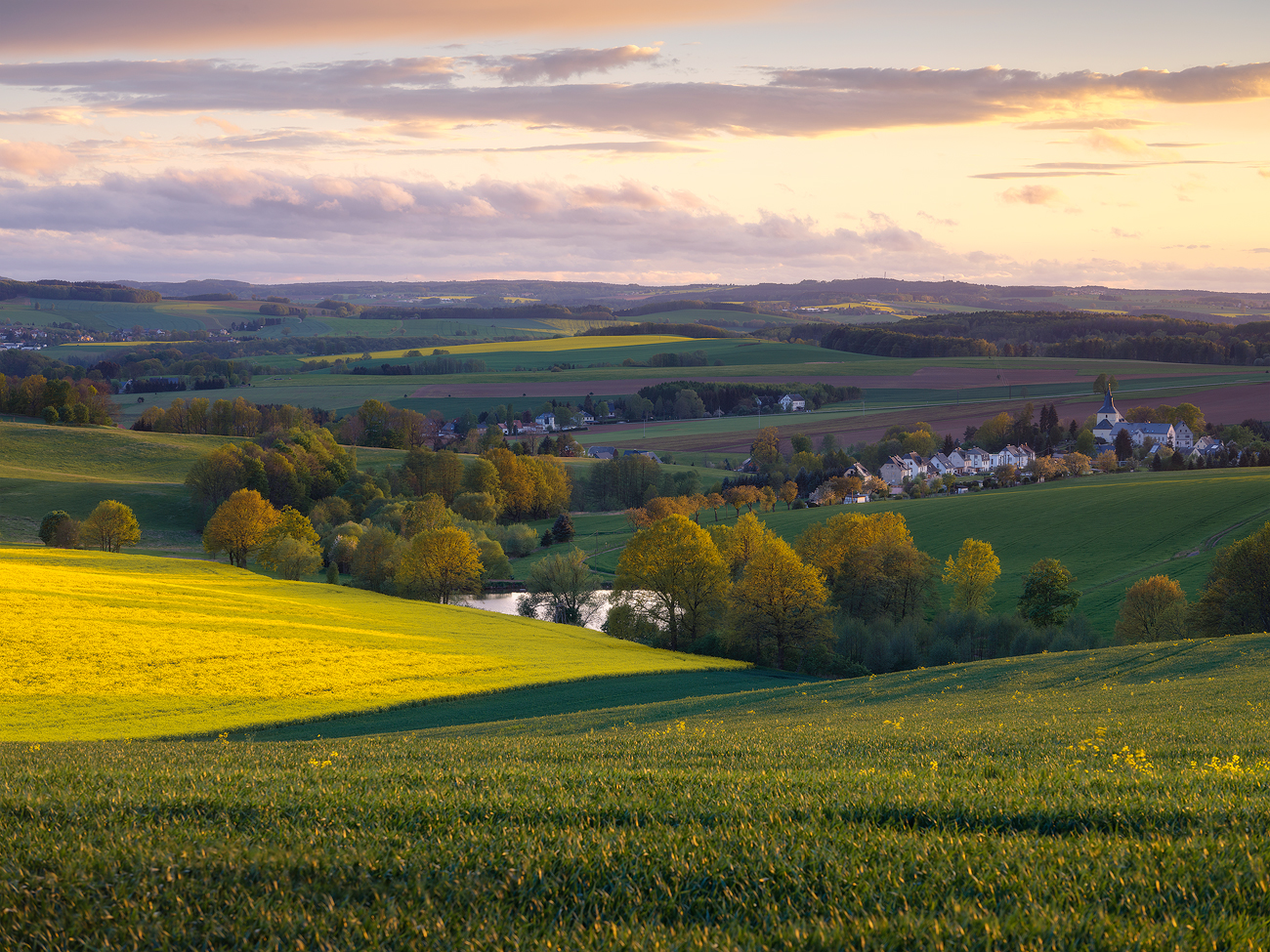
Härtensdorf, Erzgebirge, Germany
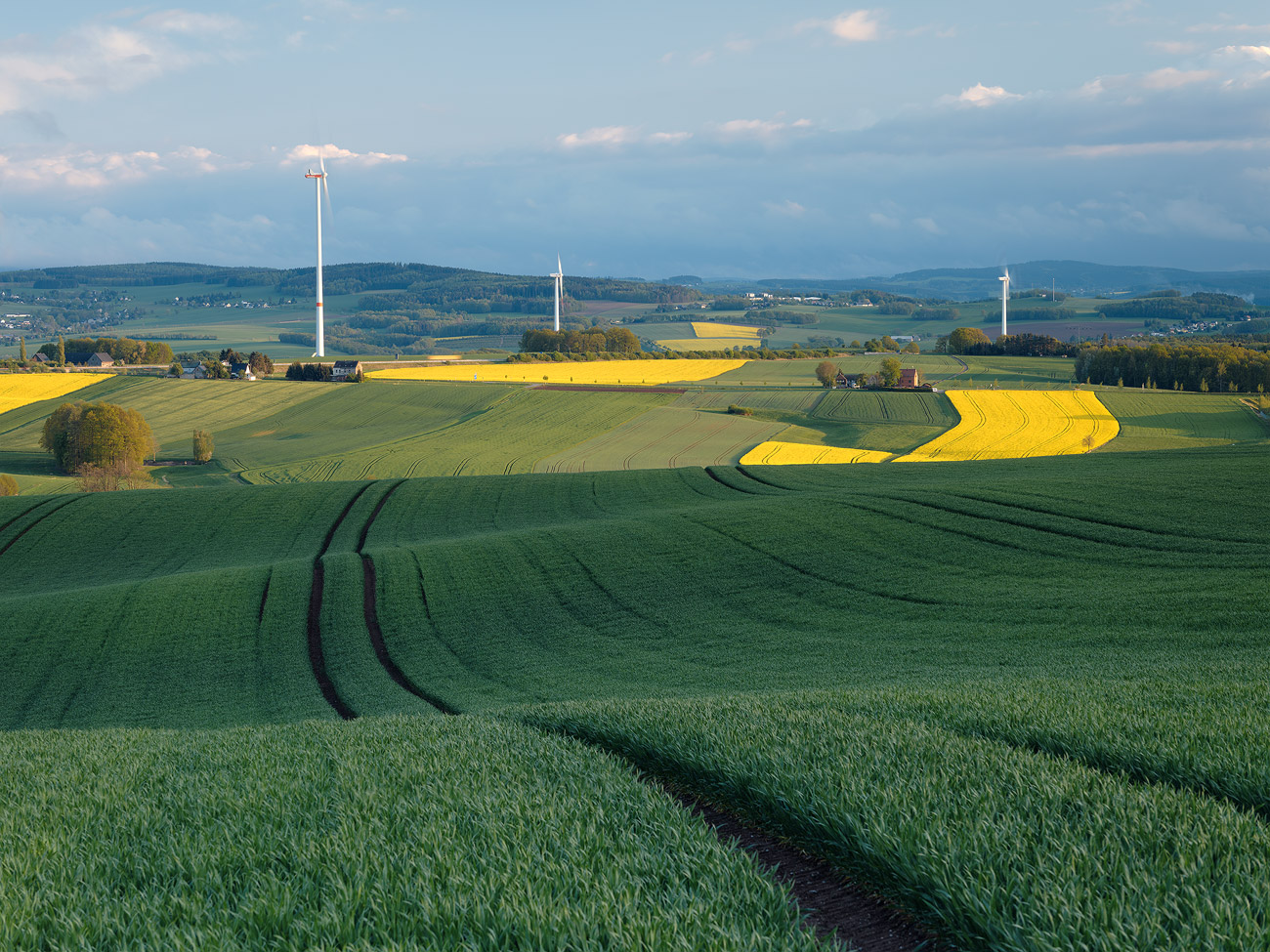
Reinsdorf, Erzgebirge, Germany
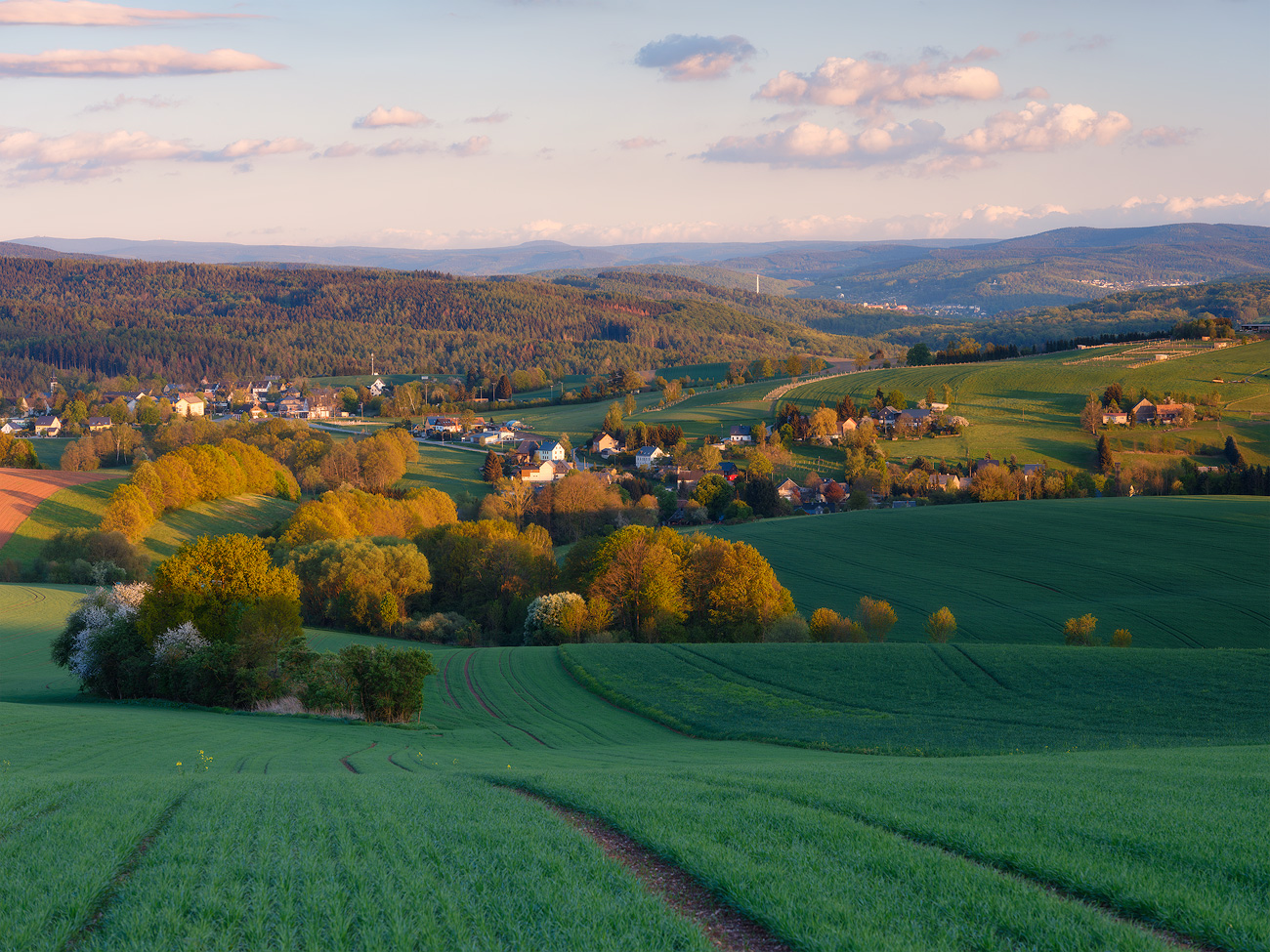
Hartenstein, Erzgebirge, Germany
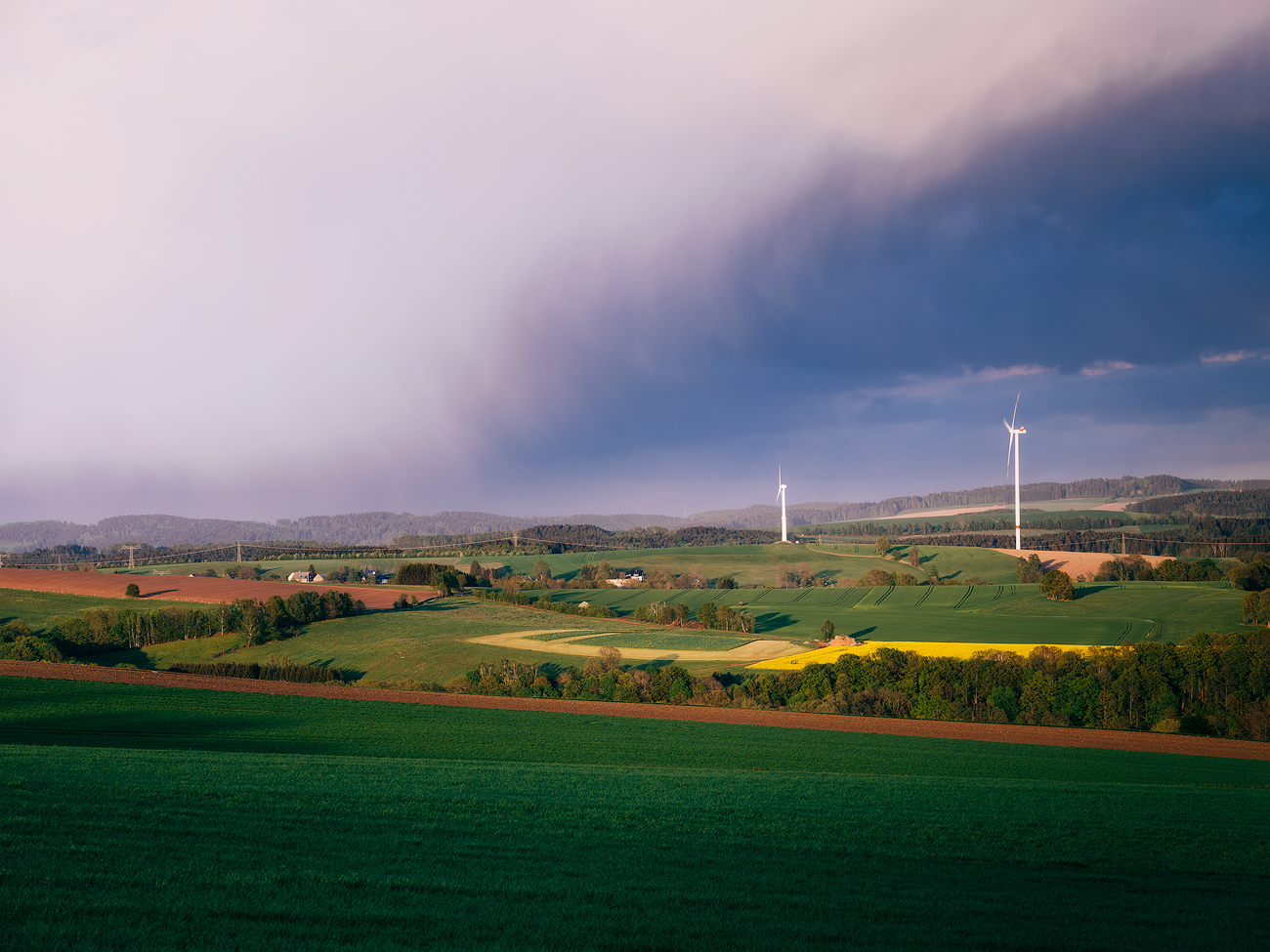
Zschocken, Erzgebirge, Germany
